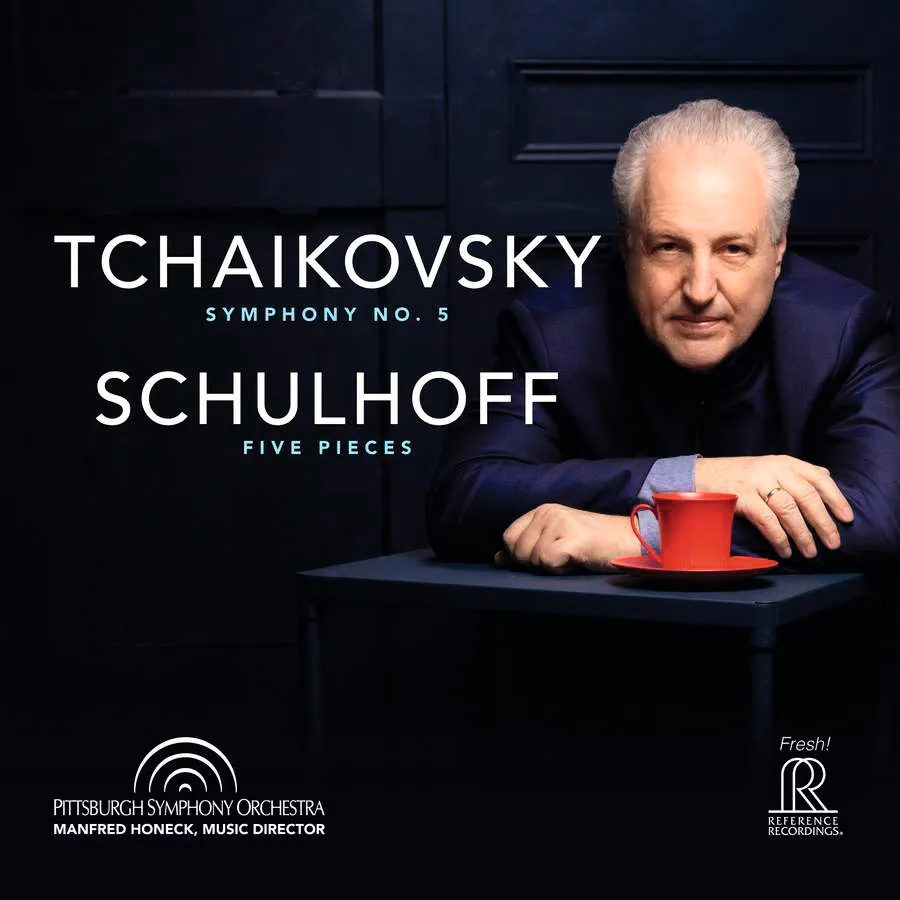
Schulhoff • Tchaikovsky Schulhoff: Five Pieces (arr. Honeck/Ille); Tchaikovsky: Symphony No. 5 Pittsburgh Symphony Orchestra/Manfed Honeck Reference Recordings FR-752 (CD/SACD) 59:04 mins
Manfred Honeck began his long association with the Pittsburgh Symphony Orchestra way back in 2006 by conducting a critically acclaimed performance of Tchaikovsky’s Fifth Symphony that was subsequently released on CD on the Exton label. Returning to this work after many years, his interpretation has, if anything, become even more compelling and here enjoys the benefits of a far superior recording with a wide dynamic range and a wonderful richness of sound.
As before, Honeck’s overriding objective has been to revivify a work that in lesser hands can easily lose its freshness and originality. To achieve this, he has followed Tchaikovsky’s carefully delineated performance instructions to the letter, investing every musical phrase with a wealth of insight, detail and colour. From the outset, Honeck’s infinitely varied texturing creates a huge amount of suspense and uncertainty in the gloomy lower string harmonies that underpin the clarinet’s first statement of the fate motif. The ensuing Allegro con anima, taken at a fast and driving tempo, has plenty of forward momentum, but Honeck adopts a sufficiently flexible approach in the contrasting second idea to ensure the more reflective moments have that necessary feeling of repose. As you’d expect, the Pittsburgh Symphony responds with phenomenal virtuosity to all the twists and turns in Honeck’s interpretation. The swooning string melodies are delivered with the same degree of warmth that you’d find in the great central-European orchestras, while the brass, in particular the quartet of horns, bring thrilling urgency to the big climaxes. But perhaps the most startling passage comes at the end of the movement where for once the murky descending line in the double basses is strikingly audible. With this particular sound image lodged in your mind, there’s an almost seamless transition into the resonant chords that open the slow movement, and this provides a wonderful cushion of sound for the magical horn solo.
There are many other moments in this performance that made me sit up and appreciate Tchaikovsky’s inventiveness in a completely new light. A good example comes in the third movement, where the isolated notes on the muted horn cut through the texture casting dark shadows over the elegant mood of the Waltz. Likewise, Honeck’s finely attuned concept of orchestral balance and brilliantly choreographed control of tempo brings tremendous dividends to the Finale. The roaring timpani roll that unleashes the Finale’s Allegro vivace section is simply electrifying, and what follows, with the raucous almost Stravinksian dialogue between wind and strings imitating the sound of balalaikas, is even more arresting.
There’s plenty of energy and imagination in Schulhoff’s Five Pieces for String Quartet, an unexpected coupling performed here in a fantastically resourceful full orchestral arrangement by Honeck and Tomás Ille. Schulhoff’s sequence of dances, ranging from a distorted waltz and a sultry Tango to a frenzied Tarantella, is a typical product of the roaring 1920s, and in this new version should certainly gain more admirers for this fascinating and immensely talented composer.
Erik Levi
